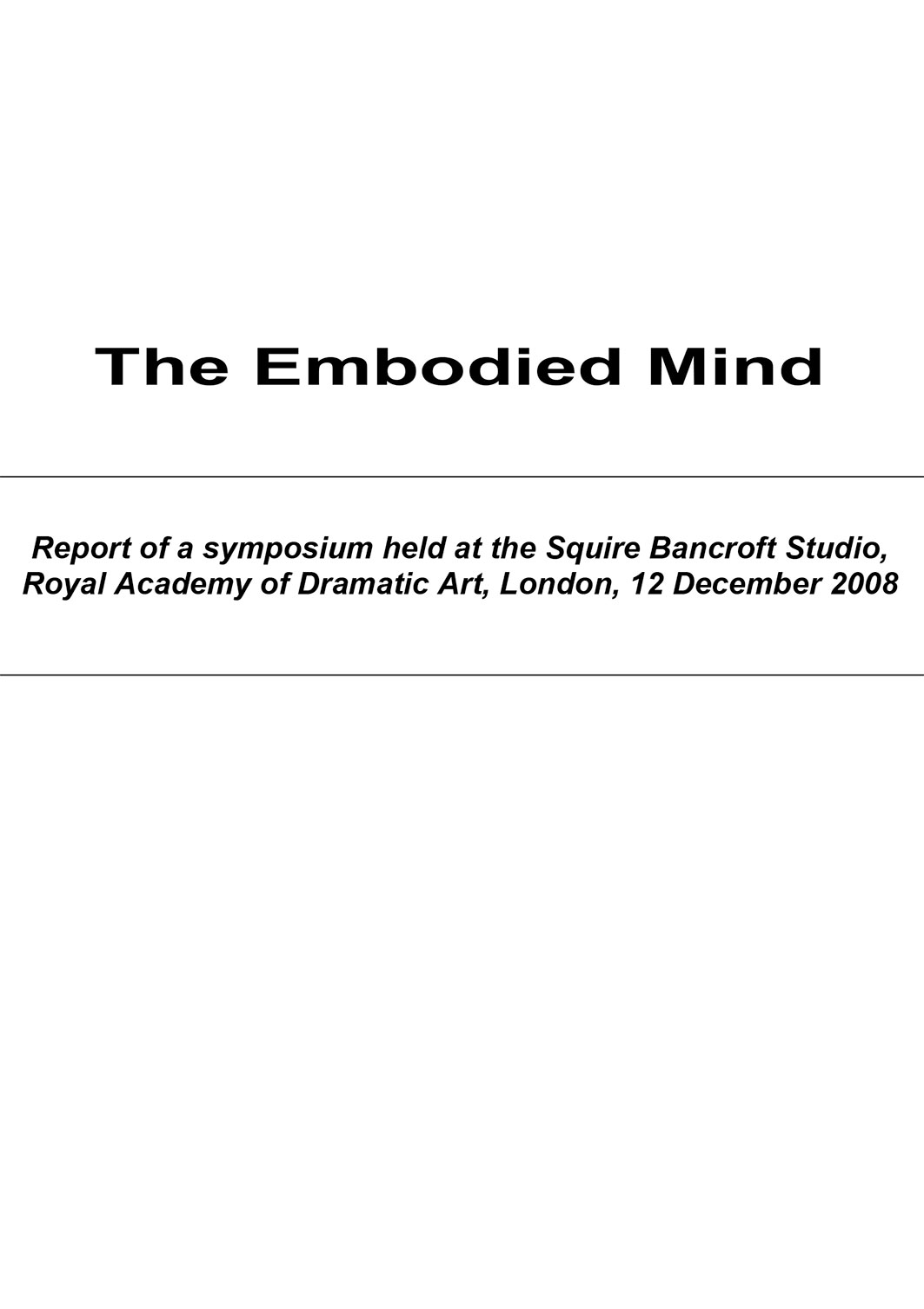The Embodied Mind

March 2009
Ed. Siân Ede
Free PDF of the Report (15.8 MB) 32 pp
(March 2009)
Report of the symposium held at the Royal Academy of Dramatic Art, 12th December 2008.
‘A lot of neuroscientific discovery has been made through observing people with brain dysfunction, in order better to comprehend the workings of the ‘normal’ brain. By contrast, dance and theatre practitioners possess a superfunction, training themselves to observe their own processes, attaining often astonishing feats of ‘body memory’, spatial awareness and unspoken physical communication with each other and with audiences, and turning this into a new composition, a work of art. Clinicians are sometimes amazed by the brain/body’s determination to cope with injury or illness, its flexibility and plasticity, and an insight into this could inspire dance and theatre artists not just to understand and challenge their own practice but to create new artworks that communicate differently. It would be fascinating for both sides to learn more about the ideas of the other…’
– Siân Ede, Deputy Director, Calouste Gulbenkian Foundation
